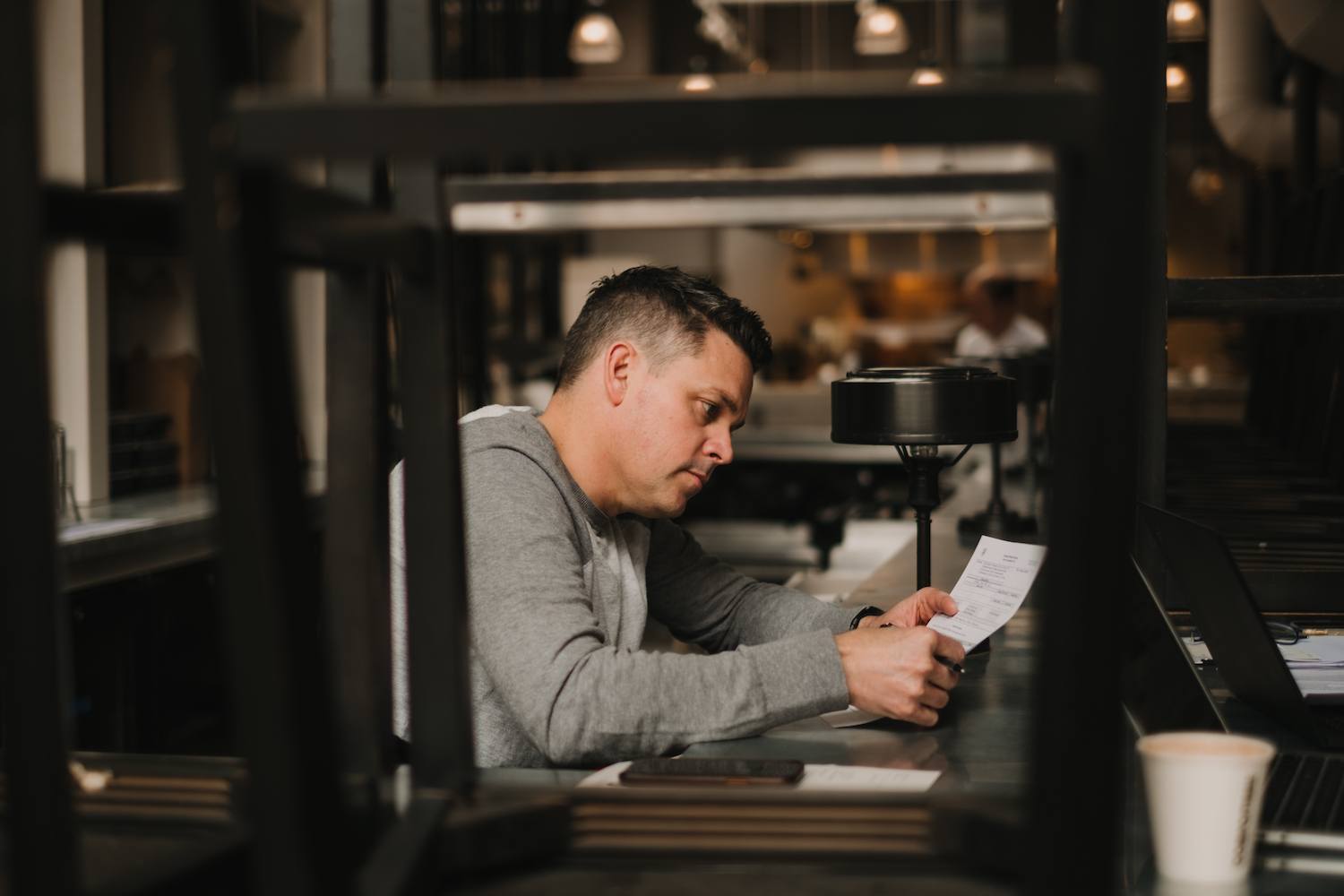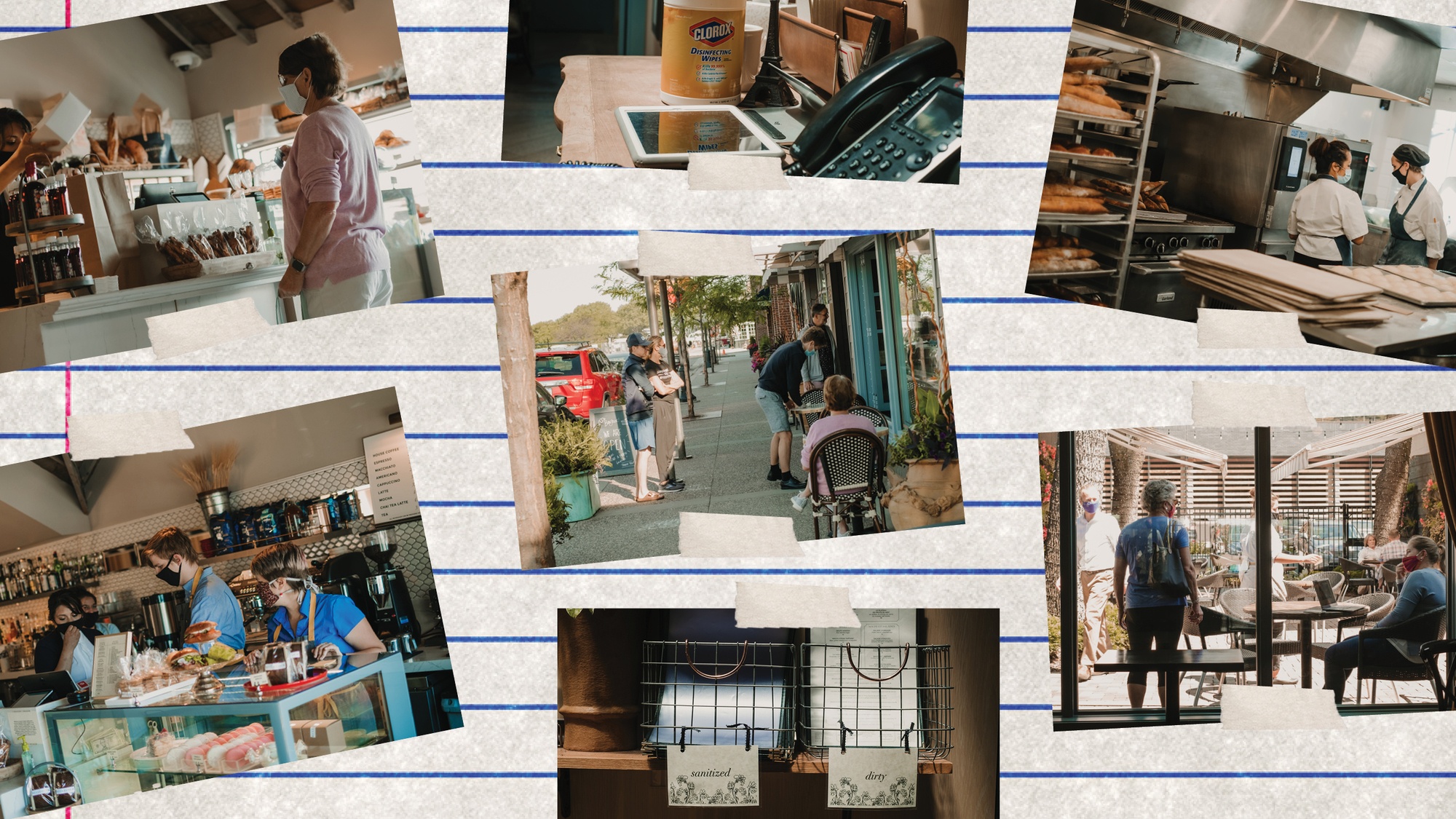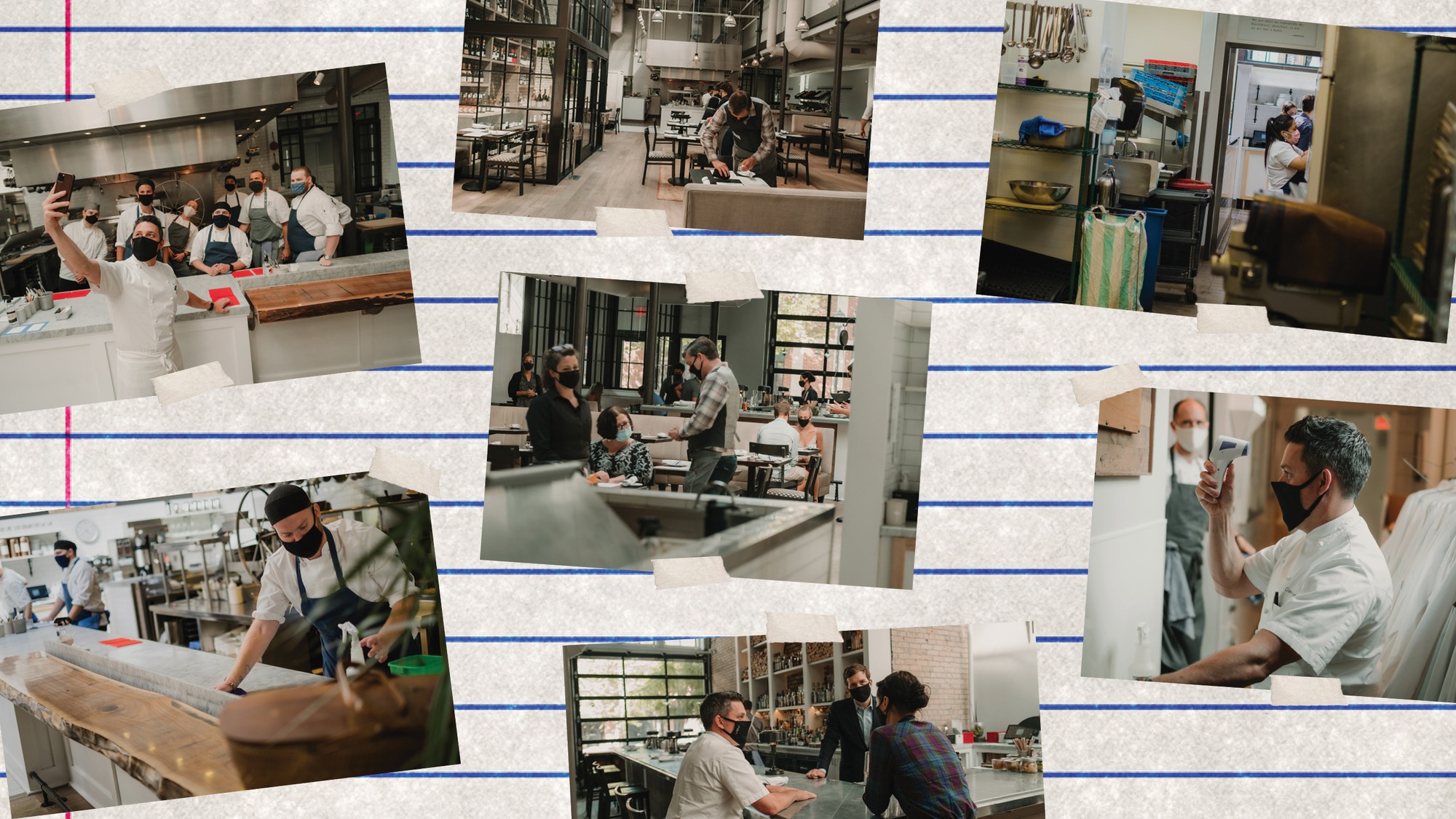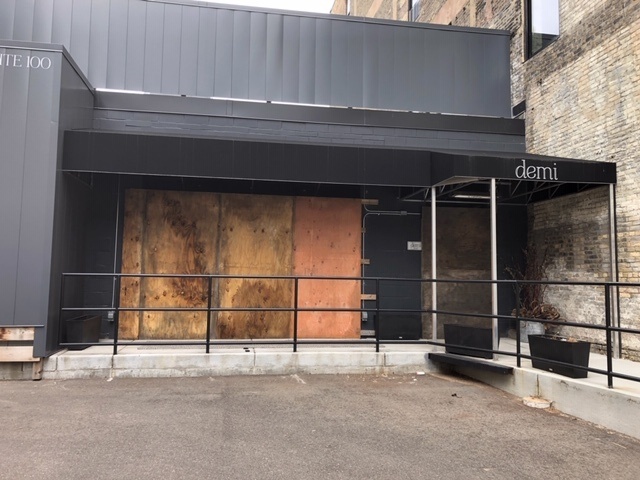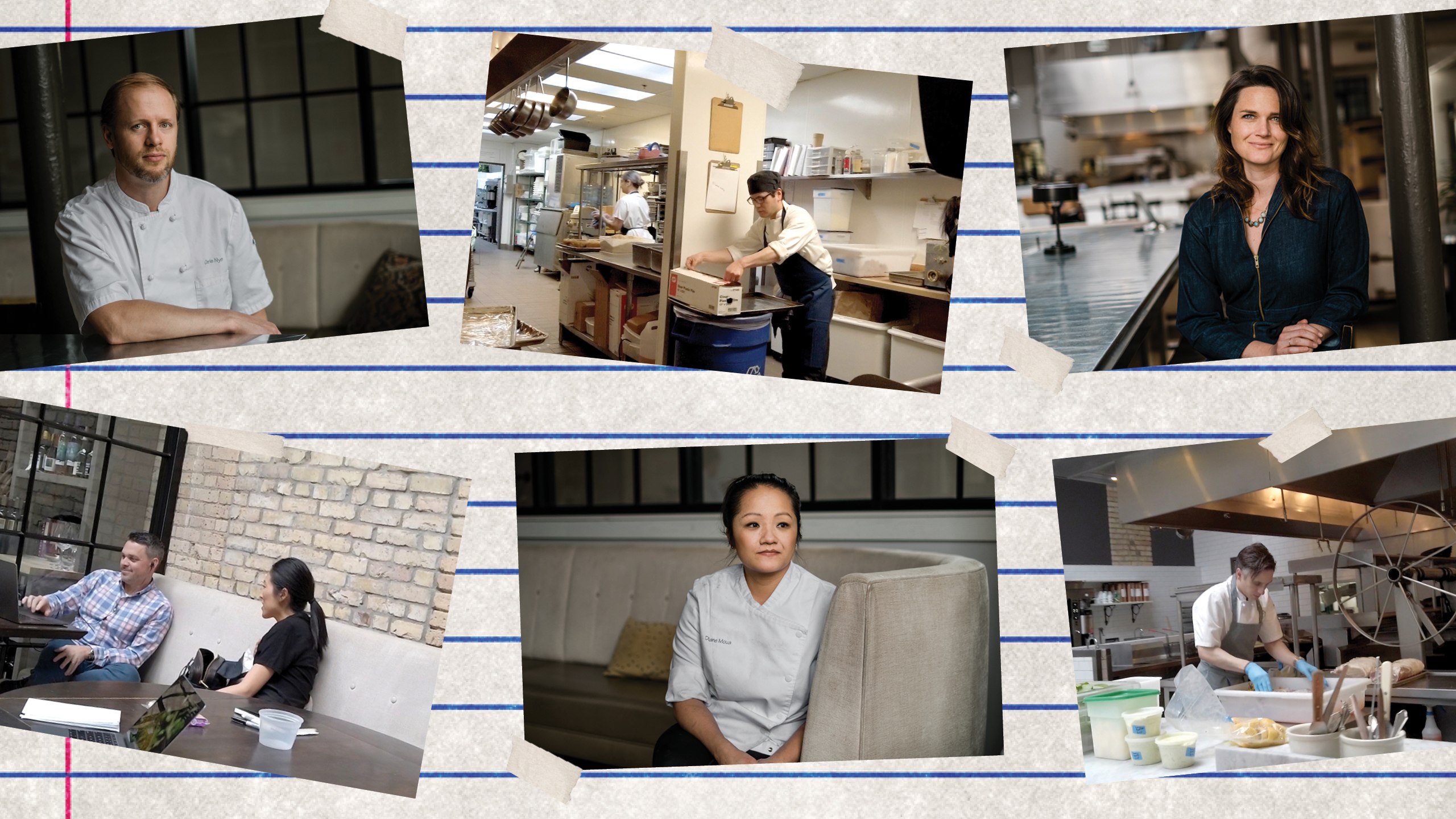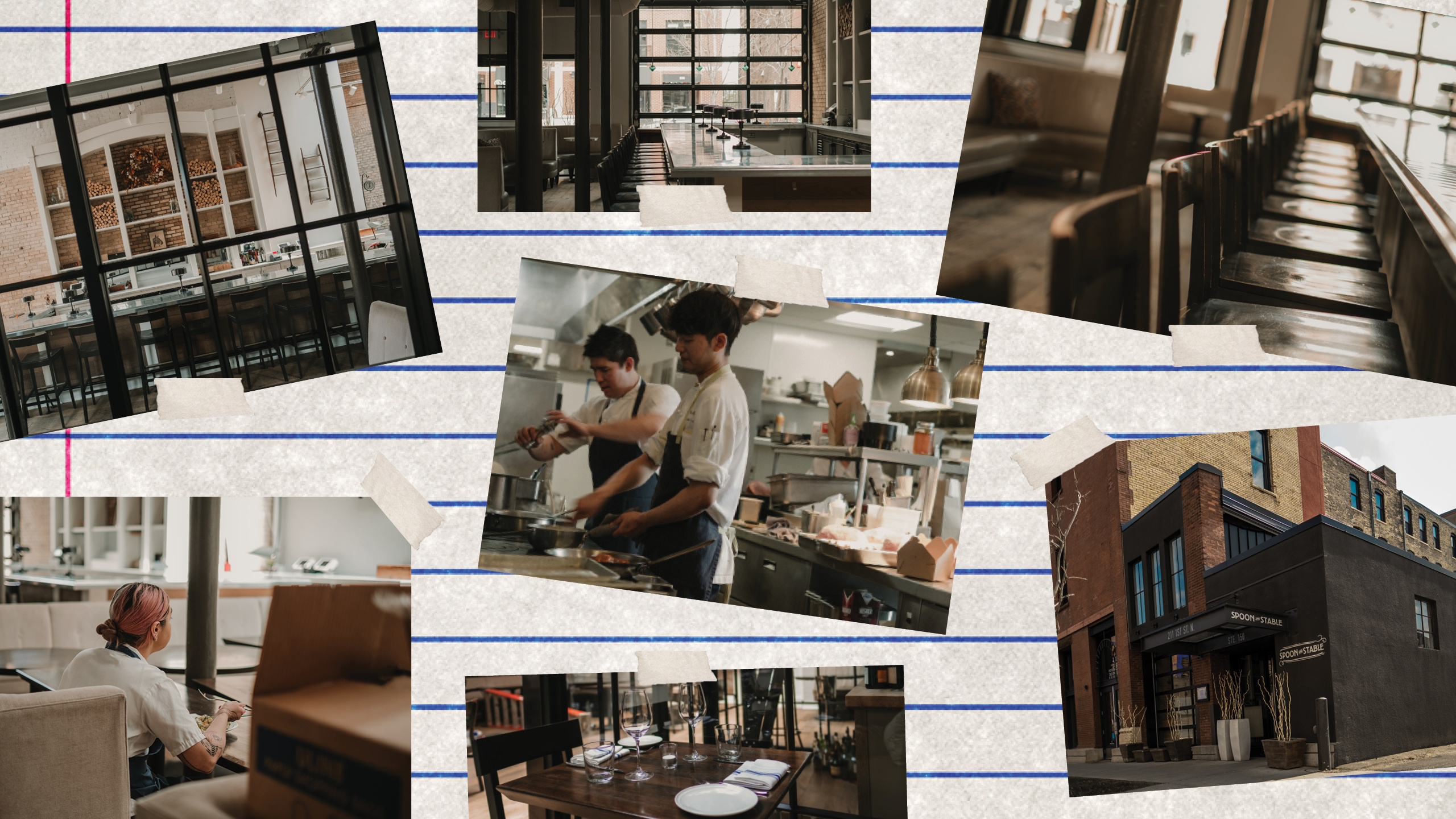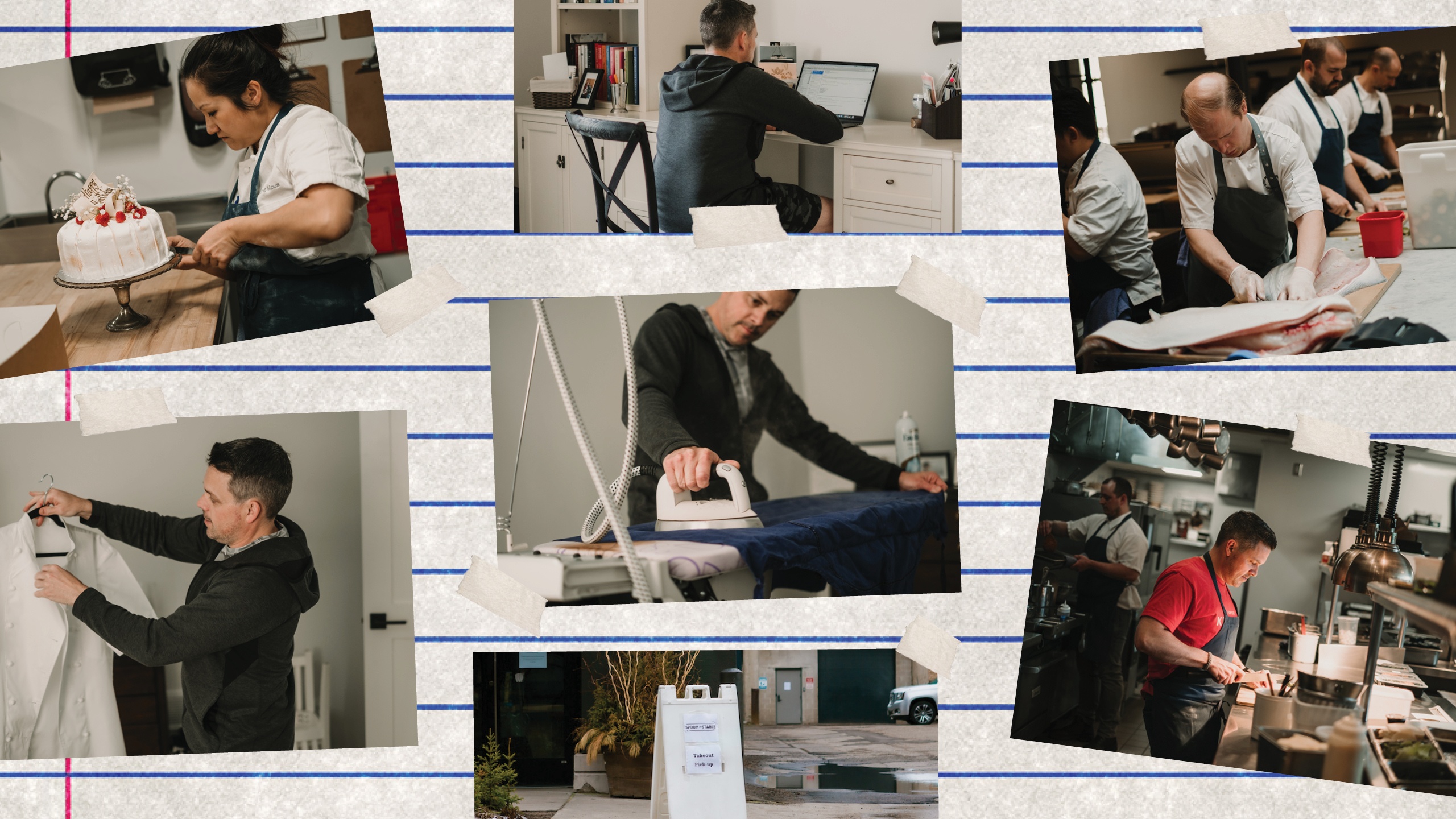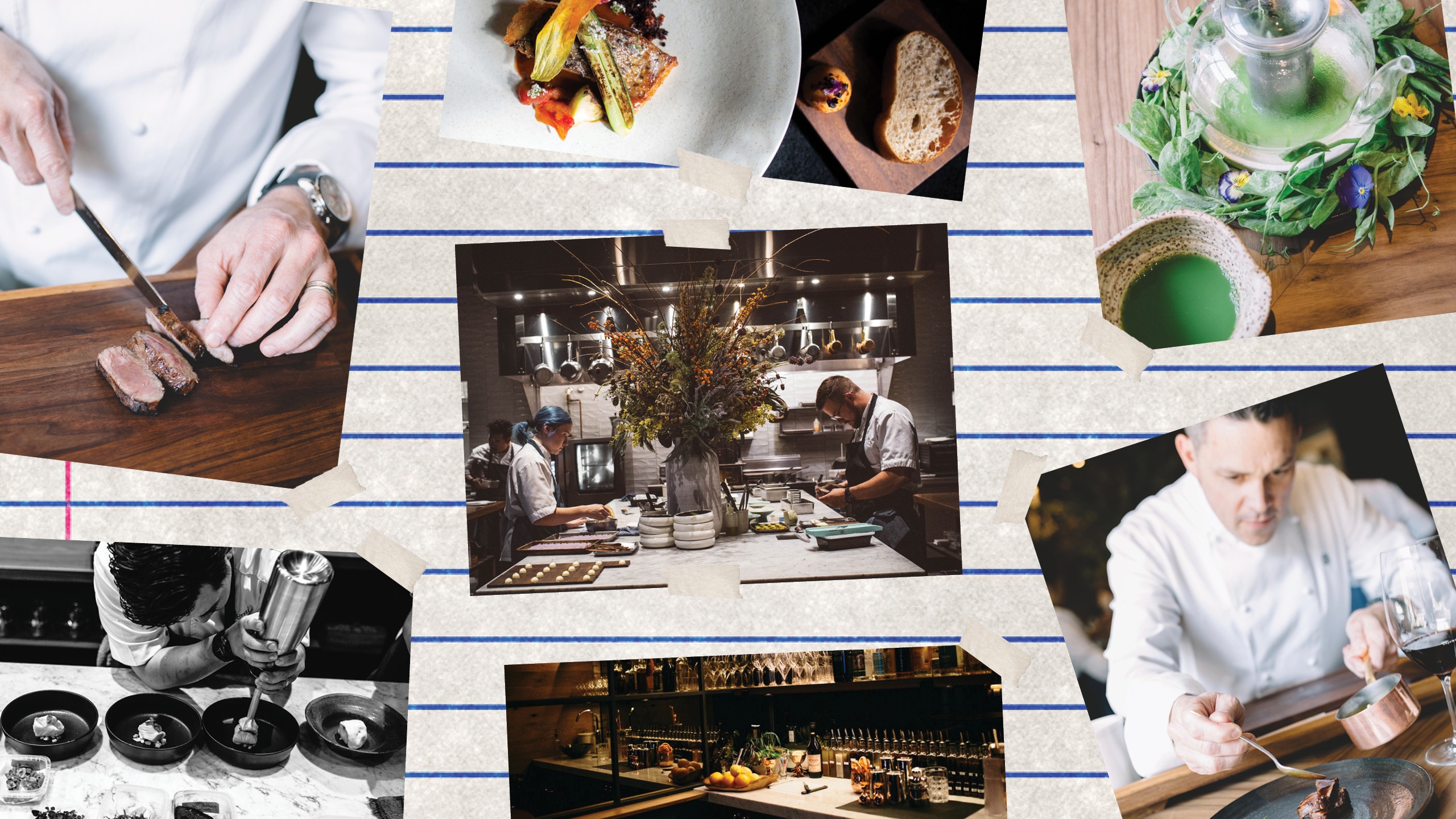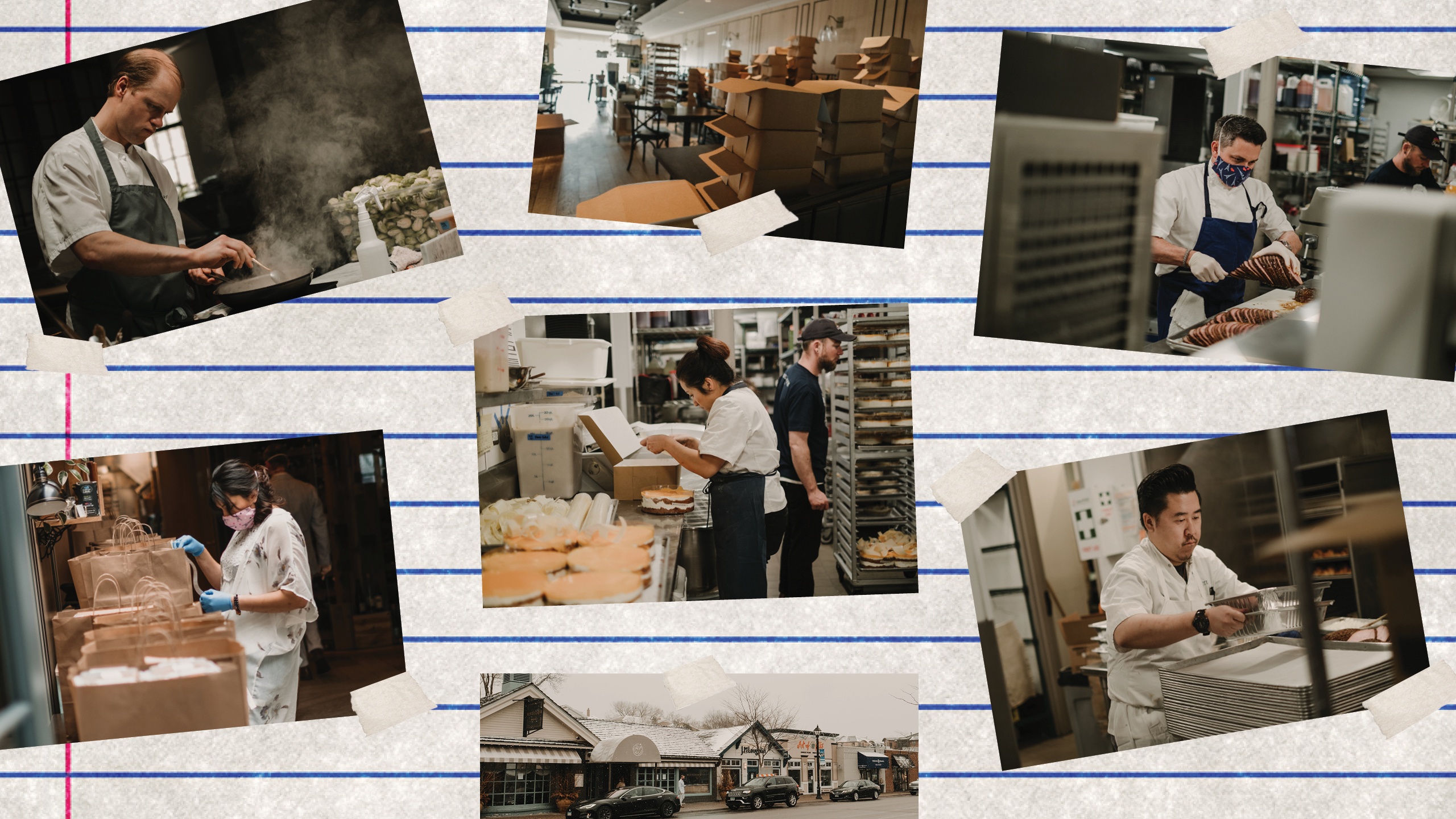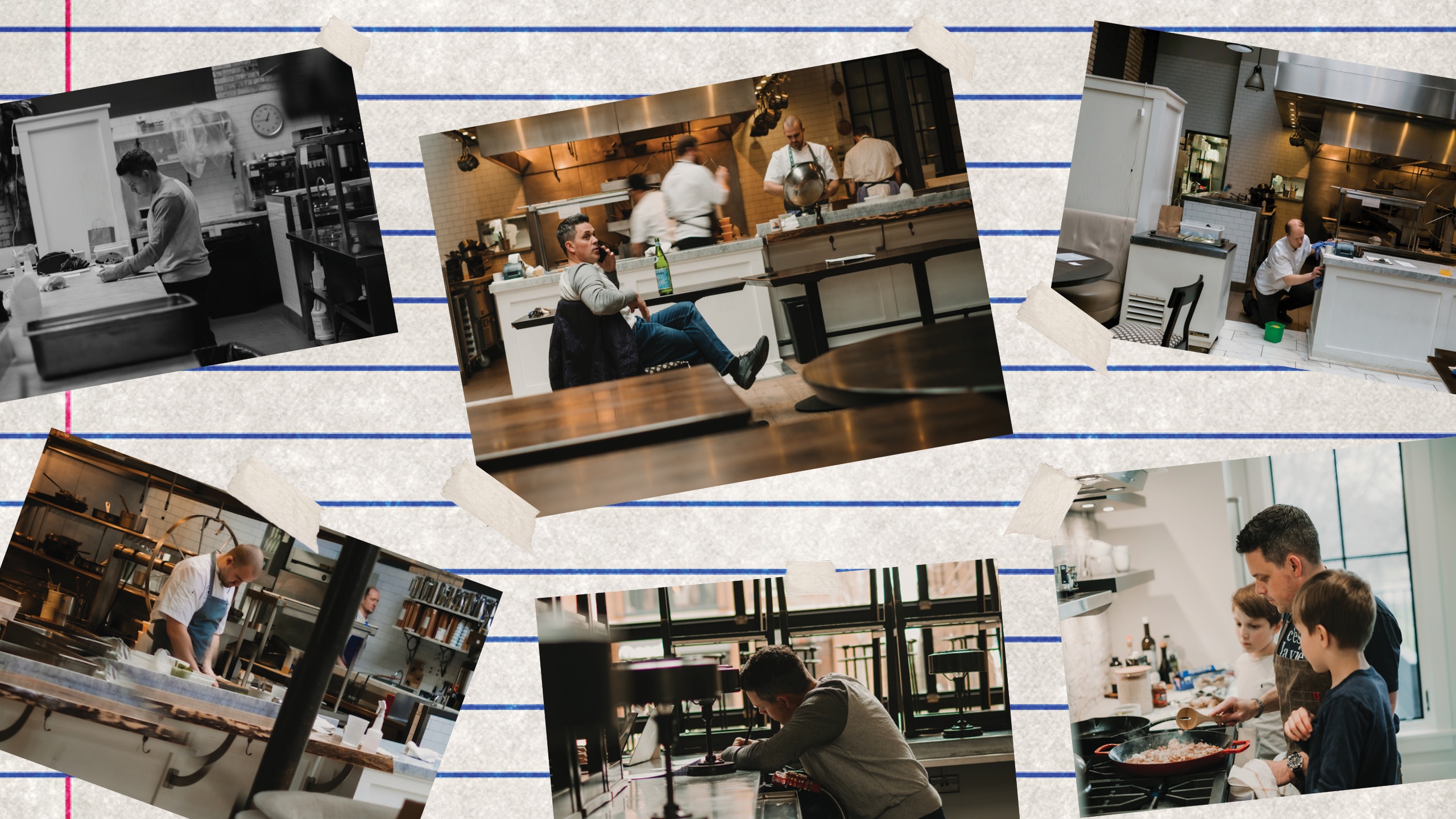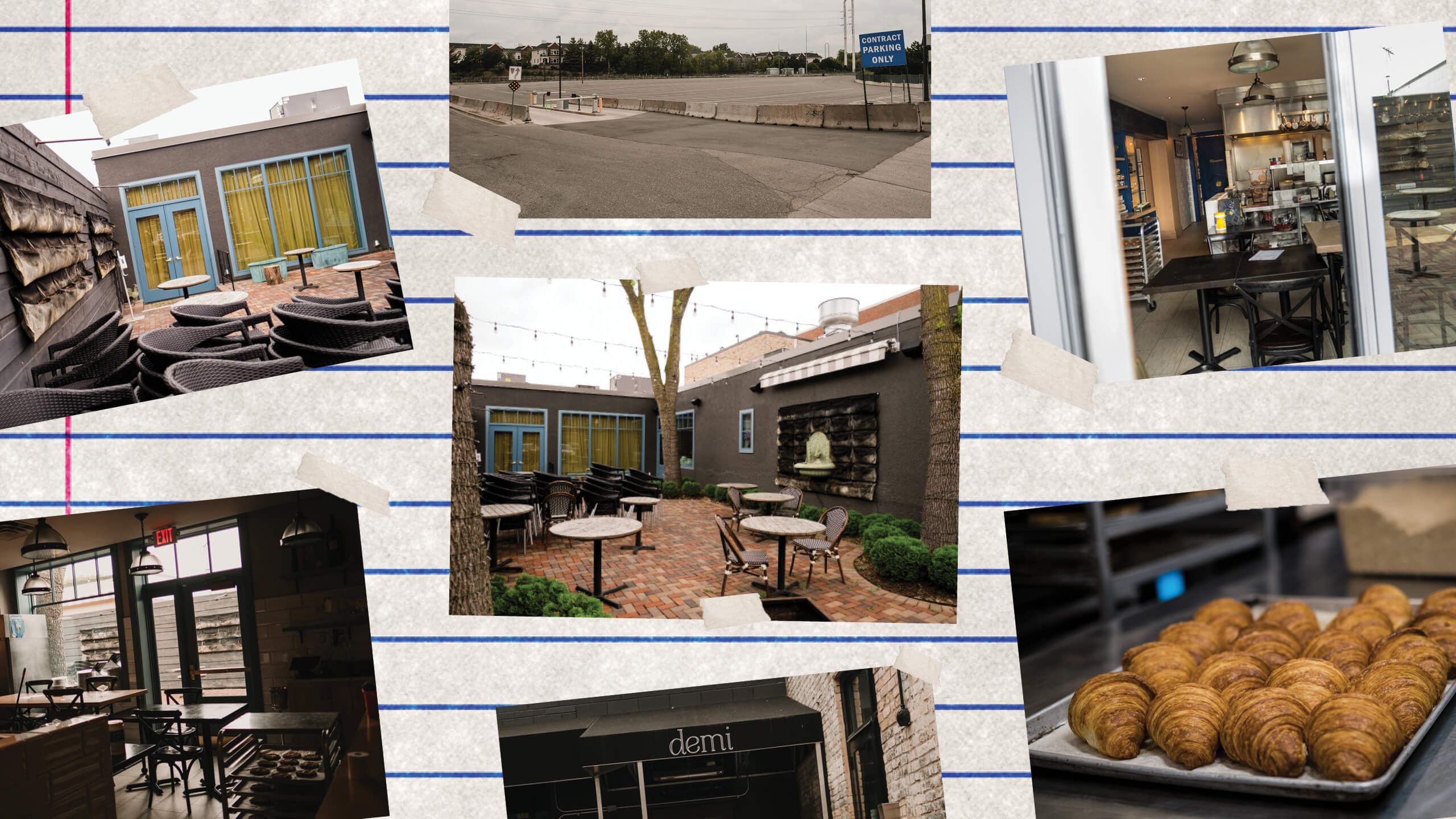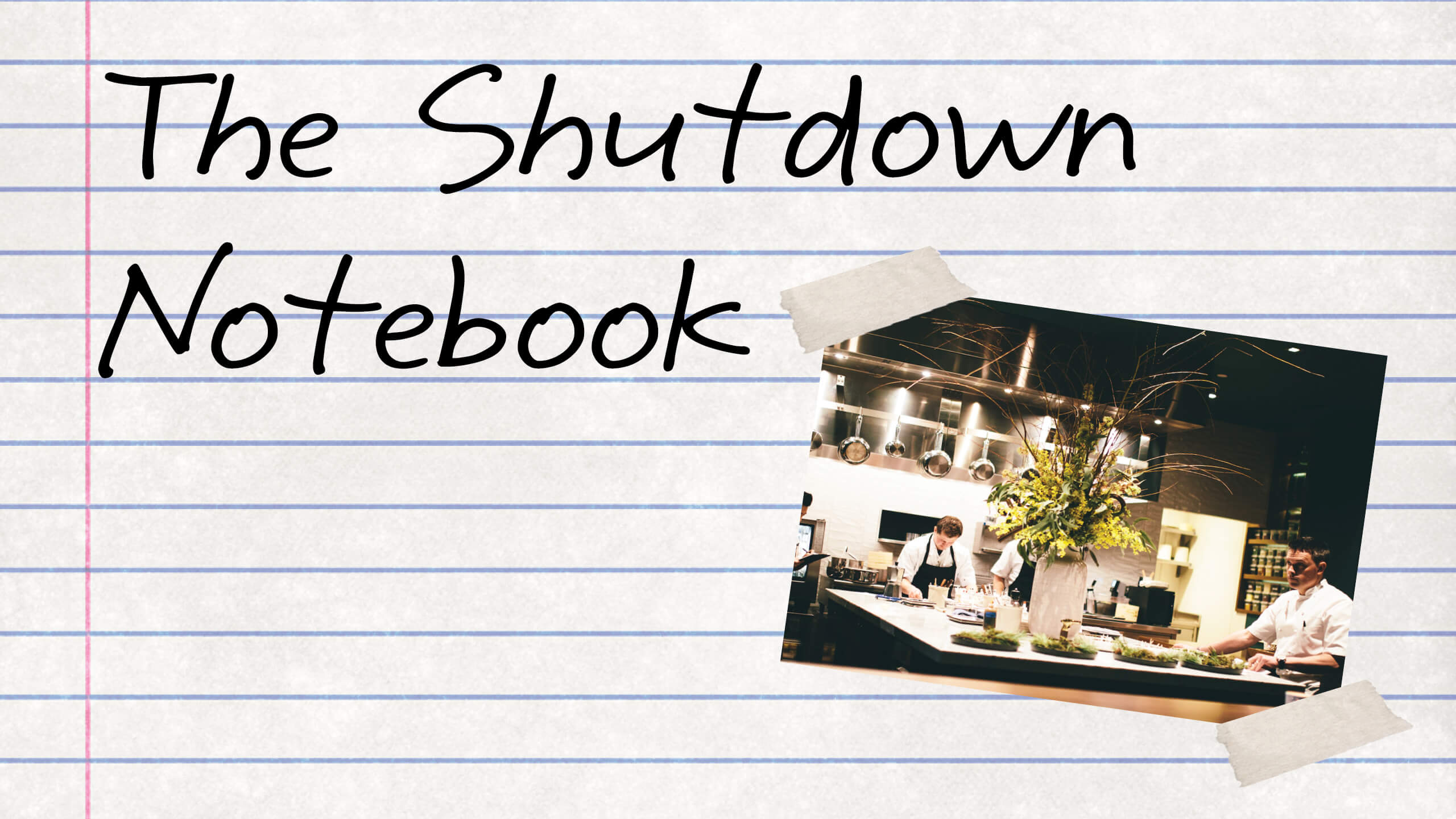
Photo by Libby Anderson/Flickr/Nicolas Raymond/Graphic by Talia Moore
A weekly series about one chef who closed three restaurants during the pandemic—and intends to get them back.
Daily life is relentless.
If a virus were capable of empathy, Covid-19 would have stepped aside on the evening of May 25, when George Floyd was killed. It would have said, I’m not done with the world yet, but I will yield while Minneapolis, the country, the globe, confront the latest symptom of what the Floyd family’s lawyer, Benjamin Crump, would call “the pandemic of racism and discrimination,” at a memorial service 10 days later.
A pause would have allowed hundreds of thousands of protestors to speak up without a thought for heightened Covid risk, not that it stopped them. They turned out despite concerns about social distancing, or the effect of tear gas on the respiratory system, or the health profile of the stranger who poured milk on their faces to stop the burn, while headlines told the story of increased jeopardy, in passing.
Covid stuck around, as did its daunting offspring—separation and loss, unemployment, an imperiled economy, people rebelling against the very measures that could save us from a second spike—even as all that was eclipsed by the larger, older, insistent issue embodied, this time around, by former Minneapolis police officer Derek Chauvin.
After almost three months, Kaysen and his colleagues could go back to a reduced version of what they did for a living.
To quote the Reverend Al Sharpton’s eulogy for George Floyd, “What happened to Floyd happens every day in this country, in education, in health services and in every area of American life. It’s time for us to stand up in George’s name and say: get your knee off our necks.”
Some people want to talk, and some ask for time for silent reflection. We look for things we can do right away and speak of the need for long-term solutions, for organizing as an essential companion to protest. Finding answers could take up more than all our time, if everything else were somehow put on hold.
But restaurant owners, like anyone who was struggling to stay afloat before May 25, have to keep an eye on a second reality: If their beleaguered restaurants go under, as so many have, with more predicted to follow, they can’t make changes, can’t talk about what they hope to learn and do. If they have taken the protests to heart—considered who works for them and how to do better, to hire and mentor and promote more people of color—they have to have a restaurant that can meet its payroll.
The day after the June 4 memorial in Minneapolis, chef Gavin Kaysen got a text from someone who had spoken to the governor about an announcement planned for later that day: Patio dining at 100 percent occupancy could begin immediately; indoor dining at 50 percent capacity would start June 10.
After almost three months, Kaysen and his colleagues could go back to a reduced version of what they did for a living.
And because life has little sense of proportion right now, the other good-news shoe dropped on the same day: The government’s controversial Paycheck Protection Plan was revised to give restaurants more time to meet a more reasonable set of guidelines.
What had been lifeblood survival issues for restaurants—and still were, if anyone stopped to think about it—felt peripheral, taken in context. And yet Kaysen had to get ready to re-open, even as he gave new thought to what that meant.
—
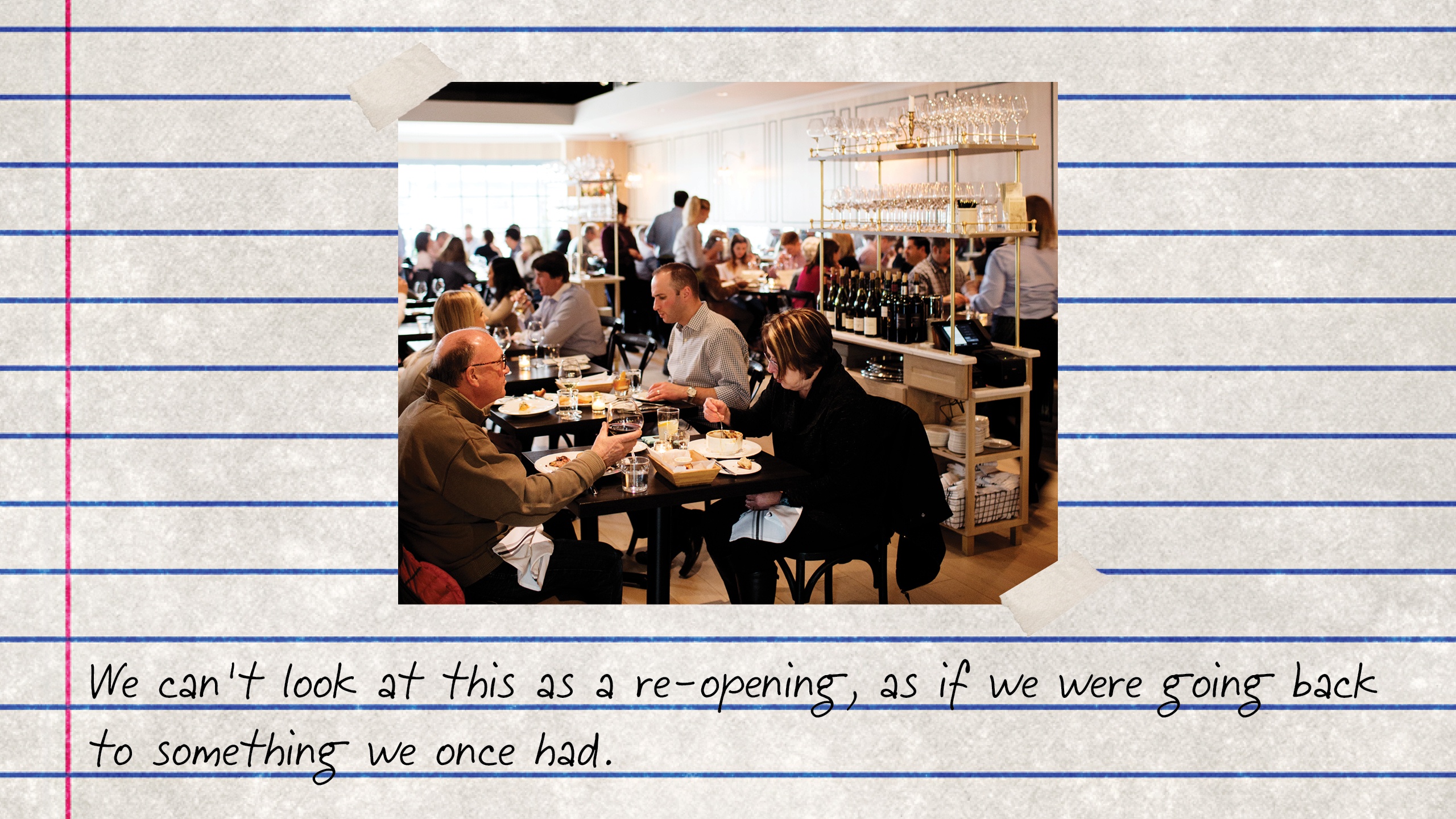
Eliesa Johnson/Nicolas Raymond/Flickr/Graphic by Talia Moore
First steps
We honestly haven’t even been able to start a conversation about what we have to do next. We’ve been taking time to mourn, to listen, to take stock of what actions to take. First thing we did was, 20 percent of all our take-out proceeds for the rest of June go to a group called Appetite for Change, where I was on the board for about three years. It’s run by three women who fight for social change through health initiatives and food. They teach young kids to cook, teach them where healthy food comes from.
And I’m ready to have the larger conversations we need to have. Chef Kwame Onwuachi said something last week that resonated with me, and with a lot of people I’ve talked to: You can’t expect the tree to be in full bloom right now, right away. It should’ve been planted long ago; let’s not be reactive to this situation, but come up with lasting solutions.
He also had a piece in The Washington Post on Monday that featured him and three other Black restaurateurs, and alluded to the same point. We have to plant the seed and continue to work on this. We have that opportunity, in terms of who we hire and what our companies look like. “It doesn’t come with a tweet, a post or even an article, for that matter,” he said. “If we truly plant the seeds of understanding, compassion and equity today, we will certainly have a better future tomorrow.”
Instead of looking at it as, We used to seat 80 and now we can only seat 40, at Spoon, think of it a different way: Spoon seats 40 people, and maybe someday we can increase that number to 80. We start fresh as a 40-seat restaurant. Let’s flip the script.
There’s so much for us to work on, on so many levels. One hundred percent, the color of a person’s skin matters, and we have to do more to address that. Gender matters, too, in my experience. A lot of my leadership team is women; my management team is, to a great extent, women. But the guest needs to be thinking about this as well—and whatever I do, that’s not something I can control. We’ve had a woman general manager at one of the restaurants since it opened, and when she’d go over to a table people would say, No, no, I don’t want to talk to her, I wanted the general manager. We all have to give more thought to this.
Almost our entire host team at Spoon and Stable is Black, mainly Somalian—Minneapolis has a large Somali immigrant population. They were furloughed when we cut back from almost 200 employees to the 20 people who’ve kept us going. I hope they come back to work, and we’ll be doing outreach in the next few weeks to see who’s returning; their positions are there for them if they do. But we don’t have people at the higher level right now. It is something that’s making all of us look internally, and say, Now what? I think this gives us room to grow. It’s an opportunity.
—
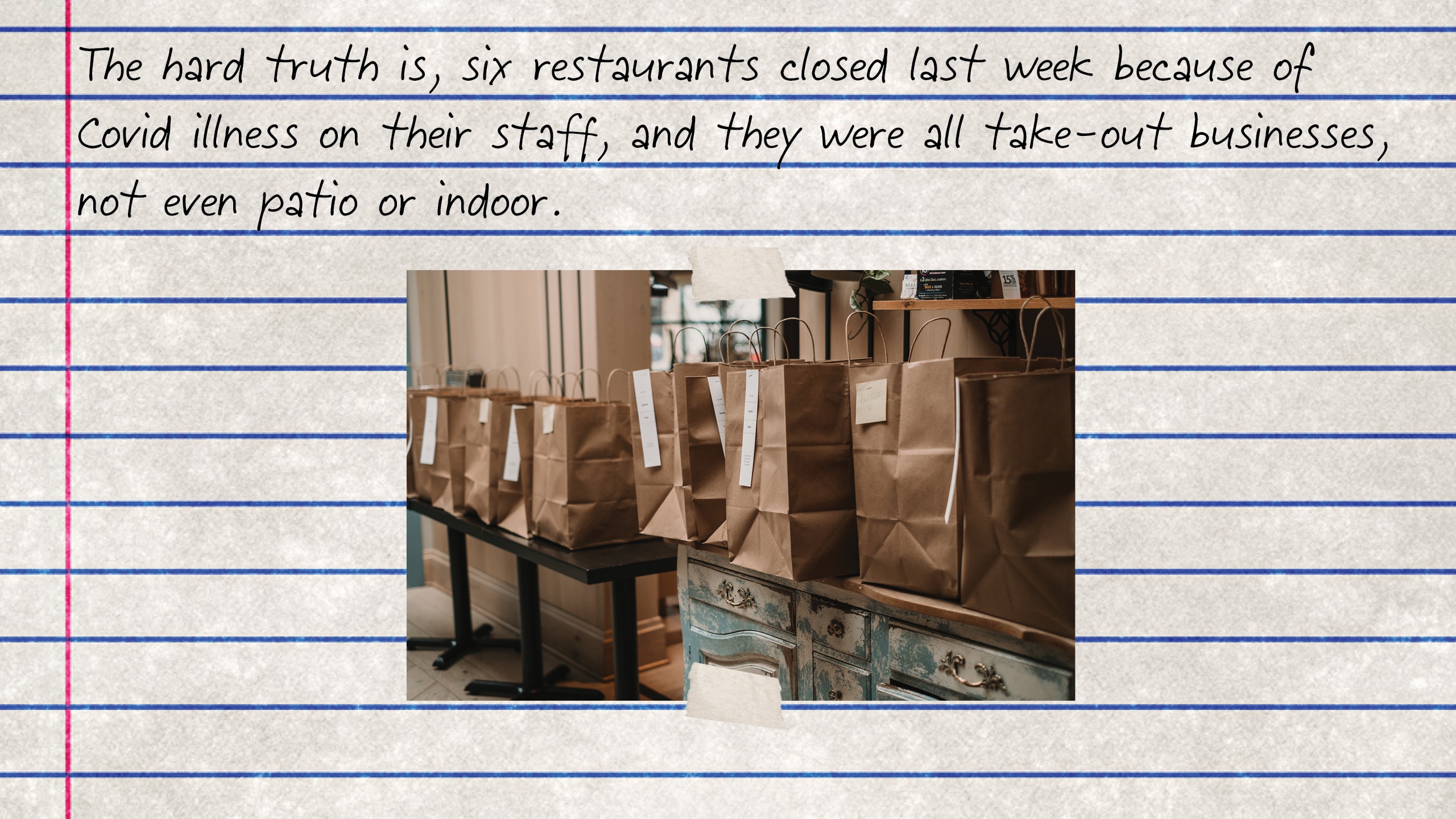
Dave Puente/Nicolas Raymond/Flickr/Graphic by Talia Moore
If you build it they will come. Maybe.
In some ways I don’t feel it’s relevant to go back to the restaurants yet, with everything evolving so quickly. From the vantage point of being in Minneapolis, the epicenter of this uprising—even though what led to it has been going on for so long—we’ve seen it go from outrage to anger to violence to, quite frankly, these peaceful protests. It has been lovely to see people joined together, even as I looked at Los Angeles and New York City, where the clashes were still so aggressive.
But I know what I have to do. On a practical level, I have to address issues of equality in the way we operate, which includes addressing a flawed tipping system that benefits some of the front of the house, but not all, and certainly excludes the back of the house—porters, receivers, cooks, and the people you might not see working hard to make your meal and experience valuable and memorable.
On a larger scale, I need to listen to the people who work for me and find ways to be better. And recognize that our community is strong but very broken, right now. Restaurants are going to play an important role, as places where members of the community can come together and talk.
That’s why I have to strap on my boots and say, Well, the announcement’s come out about opening. What are we going to do?
We’re the custodians of public health, and have been for generations. This shouldn’t change how much we clean, but we should put a highlighter on it, so people can see it all the time. It’s important for people to see it for a while.
The answer is, Stick to our original plan. But this past weekend I had a thought I shared with the management team. We can’t look at this as a re-opening, as if we were going back to something we once had. We need to put that out of our minds and just think about opening these restaurants. Put a date on it, do all the things we’d normally do for a new restaurant.
Instead of looking at it as, We used to seat 80 and now we can only seat 40, at Spoon, think of it a different way: Spoon seats 40 people, and maybe someday we can increase that number to 80. We start fresh as a 40-seat restaurant. Let’s flip the script.
We’re looking at opening Bellecour’s bakery and patio in late June, and should have a specific date by next week. Ideally we won’t fully occupy the indoor space, at first, in case bad weather or rain drives patio diners indoors. People still have to have reservations to sit outdoors, so now, if it rains, they can come indoors and we still won’t go over our 50 percent occupancy.
Demi will likely be the second opening, probably early July, and Spoon in mid-July. I’m not going to open Demi sooner, even though I’d been thinking about it. It doesn’t make sense anymore to put a ton of effort into one or two tables, now that we know the dates. We might as well wait two more weeks and then we can do two seatings of 12, indoors. From a practicality standpoint, putting all that energy and effort into it, we’re better off waiting.
—
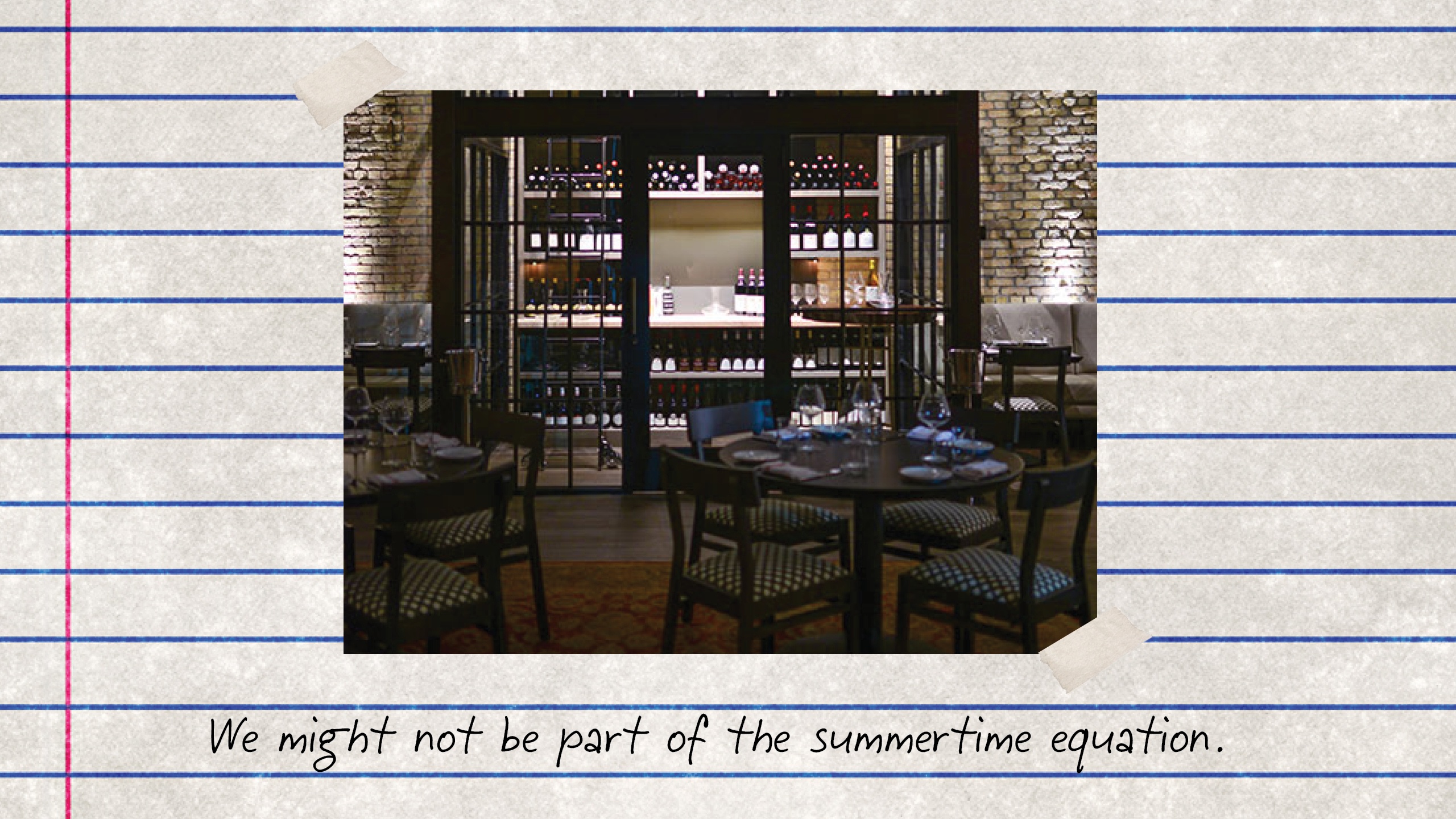
Bonjwing Lee/Nicolas Raymond/Flickr/Graphic by Talia Moore
The insistent virus
It’s hard to look at the uptick in Covid cases here, after Memorial Day weekend, and at what happened at places like Lake of the Ozarks, the photos that look like a big spring break party there. What makes it even harder to watch is that restaurants can’t control that. We’re small businesses. We can’t control what people do, how they go out, how they interact.
The hard truth is, six restaurants closed last week because of Covid illness on their staff, and they were all take-out businesses, not even patio or indoor. That was in the wake of Memorial Day; it could have something to do with being at parties then. So you have to think: All of us have been protesting or volunteering or cleaning up or whatever. From a mathematical perspective, what are we going to see in the next couple of weeks?
And there are still the parts of the virus that are hard to understand. Lately they say it’s less contractable on surfaces than they said at first. If it’s not contracted on surfaces, then I’m less worried about having somebody wipe down a surface after each time anyone touches it, but I still want to have a certain number of staff members just devoted to cleaning. And there’s a visual element. The customer needs to see it happening because it gives you a sense of safety, and makes you feel, Okay, they’re taking this seriously, they obviously care about our safety and well-being.
And while that’s true, we’re also caring for the team’s safety and well-being, and it’s important to see that, too.
I won’t say it puts more pressure on us, but it does add more work. We have to be more detailed, more precise in terms of how we want to reopen. We’re the custodians of public health, and have been for generations. This shouldn’t change how much we clean, but we should put a highlighter on it, so people can see it all the time. It’s important for people to see it for a while.
I think confidence comes when there’s a vaccine. If anything, I’m erring on the side of waiting to open, a little bit. Until there’s some sort of clarity about what can stop this, it’s a pretty hard battle to fight no matter what you do. I was listening to a doctor, on TV, saying, A vaccine’s going to come, but not as quickly as we want it to come. We need to fight this with behavioral change.
—
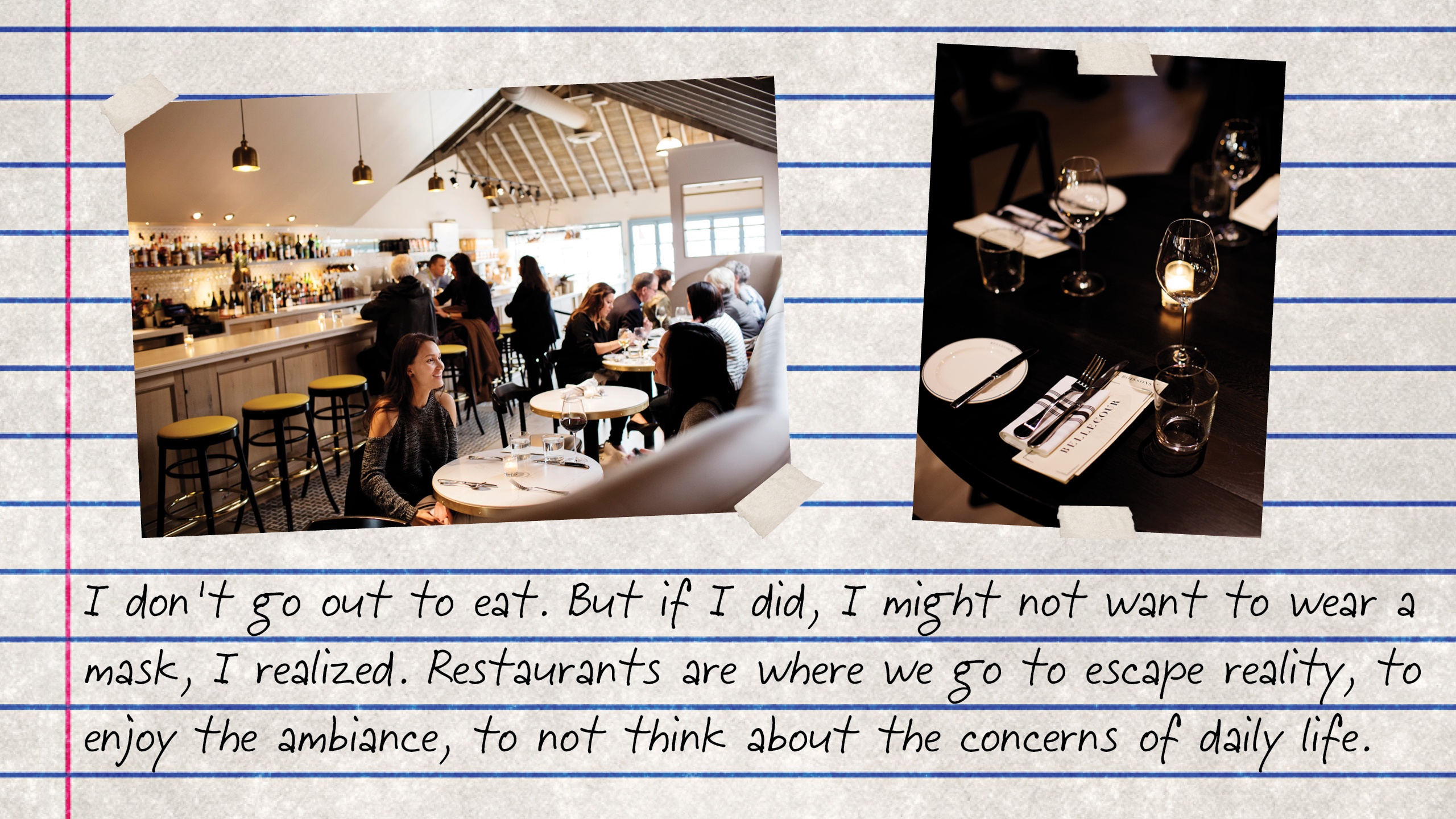
Eliesa Johnson/Nicolas Raymond/Flickr/Graphic by Talia Moore
A better life-raft
The new Paycheck Protection Plan that was signed last week provides much more flexibility, giving us 24 weeks, to December 31, to spend the money. The clock has started over. I had already given back just under $1 million when the original eight-week hiring window ran out, because I couldn’t spend it: the state hadn’t yet let us open, so we couldn’t hire back, couldn’t use the money as intended. It was a lot of money to return, but under the old terms our destiny was going to be wrapped up in a large-sum loan, and I had no clarity or rest at night about how to pay it back.
But then it looked like new rules would be approved, and there was $160 million left in the fund, so I reapplied and got re-approved. I benefit from the new December 31 deadline, and from new percentages for how to use the funds: instead of 75 percent of the money going to payroll and 25 percent to rent, we can spend 60 percent on payroll and 40 percent on rent. I’m stuck, sadly, having to repay any part of the loan that isn’t forgiven in two years, not five, but I think I can avoid that.
The percentage of staff we have to hire back is up for a bit of negotiation. The first version of this required us to hire back at 100 percent, but if Minnesota’s still at 50 percent occupancy by December 31, there’s no way to require us to hire everybody back. I’ve heard they might base the percentage on what we’re mandated to have in terms of occupancy. We’d be able to do that by the end of the year, which would mean not having to worry about the five-year repayment plan.
In Minnesota, summer is a novelty, and if it’s beautiful outside, usually we’d be busy in the bar at Spoon and Stable, and there’s walk-in traffic. But all that’s gone. Now, if it’s beautiful outside, you’re on a bike ride, doing something outside.
Still, the more I look at this, the more I realize there’s no profit on the horizon, no matter when we open or what financial resources we have. We’re in so deep now, in what we’ve lost, that all we gain by opening is to put the wheels in motion to start digging ourselves out. I think it’s a two-year build. I think there’s profit to be made down the line, but I think the steps of getting there are a lot harder than we realized, because of consumer confidence. Guests have to be willing to come out.
And we’ve seen take-out slowing down, if anything, in part because the novelty has worn off a bit. It’s become normalcy. But also, as cities and states begin slowly to reopen, that allows people to travel within the state, get out of the house, go camping or whatever they do—and that takes them away from the take-out business. It’s started to mellow out, and, frankly, I think it’s going to get slower and slower. People are home grilling, and they can have friends over.
It’s not slow to the point where I’m concerned, but based on numbers, it’s happening. In Minnesota, summer is a novelty, and if it’s beautiful outside, usually we’d be busy in the bar at Spoon and Stable, and there’s walk-in traffic. But all that’s gone. Now, if it’s beautiful outside, you’re on a bike ride, doing something outside.
We might not be part of the summertime equation.
Alison, our development director, asked me, If you could go out to eat, would you? Would you wear a mask? I said, I don’t go out to eat. But if I did, I might not want to wear a mask, I realized. Restaurants are where we go to escape reality, to enjoy the ambiance, to not think about the concerns of daily life. If you go into a room and everybody’s being temperature-checked, that’s a very different reality. I would wear a mask because I have to, but the experience is not the same. The fact is, you’re not able to escape by going out to eat. You’re not escaping reality anymore. And that’s a really big thing.
—
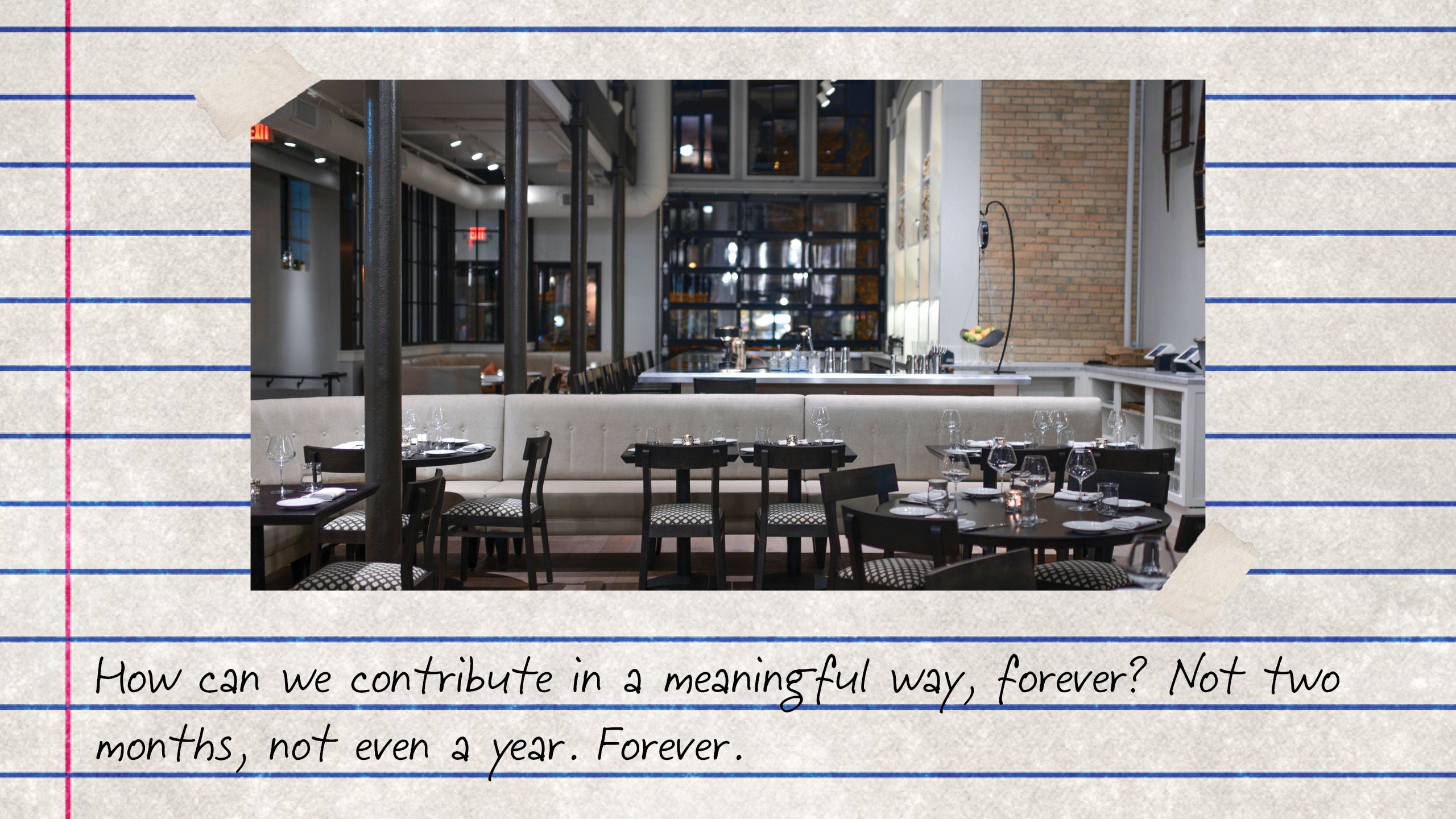
Bonjwing Lee/Nicolas Raymond/Flickr/Graphic by Talia Moore
Not fade away
When somebody dies, here, it’s a Midwestern thing, everybody brings the widow casserole. She’s overwhelmed by casserole, and then, two weeks later, she’s alone in the house. We need to figure out how to get back into that house. Figure out what is long-lasting. How can we contribute in a meaningful way, forever? Not two months, not even a year. Forever.
